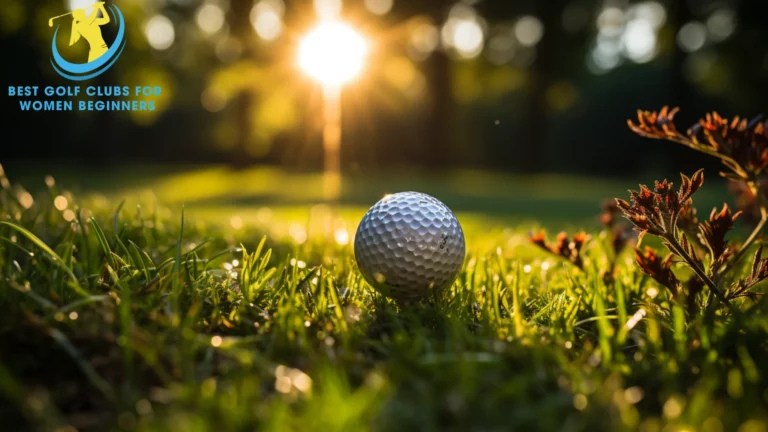10 Things Everyone Wishes They Knew Before Buying Their First Golf Clubs

Popular Articles
Starting to play golf is exciting, but buying your first set of clubs can be challenging. Many beginners jump in without understanding the details, leading to expensive mistakes and equipment that doesn’t fit well. Knowing what to look for can make a big difference.
In this new guide, we’ll discuss ten key things you should know before buying your first golf clubs. From the benefits of custom fitting to understanding shaft flex, this article will help you make a smart choice and improve your golf game.
Top 10 Golf Clubs Buying Tips for Choosing Your First Set of Golf Clubs
1. The Importance of Custom Fitting
In golf, there’s no one-size-fits-all approach. Custom fitting adapts clubs to your unique physical traits and swing style, boosting your performance.
During a fitting, experts take precise measurements of your height, hand size, and swing speed. They use this data to determine the ideal club length, lie angle, and grip size for you.
According to John Smith, a respected club fitter, “Custom fitting can drastically improve a player’s game by matching the club’s specs with their natural swing tendencies.
2. Choosing an Adjustable Driver
Choosing an adjustable driver is changing how beginners play golf. These drivers let you change loft, lie, and weight distribution, which you can adjust as you get better.
The big advantage? They grow with your game. When picking one, see how each change affects how you play. For example, a lighter driver might help you swing faster but make it harder to control.
3. The Role of Irons in Your Set
Irons play a crucial role in your golf set, particularly for beginners seeking forgiving clubs with consistent performance.
There are various types, like cavity backs, which offer more forgiveness and are easier to hit than traditional blades.
Beginners often make the mistake of selecting irons based on appearance rather than performance.
Instead, prioritize irons that improve consistency and forgiveness to aid your learning process.

4. The Importance of Shaft Flex
Shaft flex is crucial for your shot accuracy, trajectory, and distance. Finding the right flex depends on your swing speed; faster swings usually need stiffer shafts.
The right flex can greatly boost your control and consistency. Golf coach Lisa Johnson recommends, “Beginners should begin with a more flexible shaft to handle variations in swing speed and enhance overall control.”
5. Wedges and Putters: Crucial for Improving the Short Game
Wedges and putters play a crucial role, especially for beginners looking to enhance their short game. Pitching wedges, sand wedges, and lob wedges each have distinct purposes on the course.
Similarly, choosing a putter that matches your stroke style and feels comfortable is essential, given its frequent use during a round. Mastering these clubs can significantly reduce your scores and make the game more enjoyable.
6. Practicing and Improving Your Short Game
A strong short game can make all the difference. Concentrating on chipping, pitching, and putting can swiftly improve your score more than almost anything else. Practice drills mimicking real-game situations are especially helpful.
7. Not Putting Ego Aside When Choosing Irons
New golfers often pick irons designed for advanced players because they’re attracted to the idea of using professional-level sets.
But choosing irons suited to your skill level can speed up your progress and make the game more enjoyable.
This mistake often happens during fittings, where hitting consistently well can make you too confident in your abilities.
You might go for irons that prioritize feel and are compact, instead of forgiving ones.
However, on the course, you encounter different lies, slopes, and conditions, making it tougher to consistently hit your irons well compared to the controlled setting of the range.

8. Choosing Clubs Based on Distance Over Accuracy
It’s easy to be drawn to drivers promising maximum distance, but accuracy is vital for consistent performance on the course.
We often fall into the trap of selecting drivers based solely on how far they go when hit perfectly in the middle. This tendency can be amplified during custom fittings, where we focus on optimizing our swing.
However, this can create a false perception of a club’s performance, especially when compared to real course conditions. It’s crucial to consider how playable a driver is on the course.
While low spin drivers may offer more distance when struck perfectly, think about your control over them in real game situations, such as hitting fairways.
Balancing distance with playability is key to making the right choice.
9. Choosing Clubs Based on Looks
While the look of clubs might catch your eye, it doesn’t guarantee how well they’ll perform. It’s crucial to prioritize clubs that feel right and work best for your game. Equipment experts highlight that function is more important than appearance when picking golf gear. However, if two clubs perform similarly, it’s okay to choose the one that looks better to you—it can boost your confidence.
However, preferring the look of a compact-headed driver, for instance, doesn’t guarantee the best performance, especially if you struggle with speed and accuracy off the tee. Compact heads are less forgiving and spin less. So, despite your preference, drivers with slightly larger profiles might actually work better for you.
This applies to irons too, especially when considering sole width and how they interact with the turf. Even if you don’t love the look of forgiving irons, they can save you on off-center hits, particularly in wet conditions. So, while looks matter, they shouldn’t be the only thing guiding your choice of golf clubs.
10. Getting Professional Advice
Getting advice from a golf professional can provide valuable insights and tailored guidance, particularly for beginners. They can assist in selecting clubs, offer personalized tips, and help establish realistic goals for your improvement journey.
Conclusion
With these 10 easy golf buying tips, you can make smart choices that improve your enjoyment and performance on the course
Now it’s your turn. I’d like to hear your take.
How do you choose the best golf clubs for beginners?
Or maybe you have a question about something from today’s guide.
Please let me know by leaving a quick comment below.



